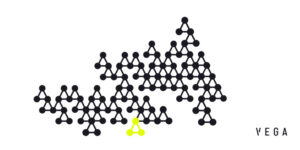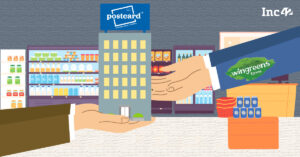People’s willingness to spend on their furry best friends has made the pet industry a high-growth space with no signs of slowing down. Over the past few decades, the pet care industry has not witnessed a single year of negative growth. Pet owners don’t see their spending on their pets as an option, which has made this industry recession-proof.
Here are some fascinating stats about the pet industry (1):
- There are estimations that the US pet industry reached 99 billion USD in 2020.
- 61% of pet owners pay more for foods that target their pets’ dietary requirements in the US.
- Dog owners spend about 73 USD annually on grooming.
- About 21% of pet owners spent more money on their pets during the pandemic.
- 31% of pet industry customers are Millennials.
- 12% of adults with children under 18 adopted pets amid the pandemic.
- More than 50% of dog and cat owners give their pets a holiday treat or gift.
- 69% of Millennials choose natural and organic products for their pets.
- 41% of cat owners and 43% of dog owners purchase premium pet food.
Now, some interesting facts about funding in the pet industry.
- The pet industry raised 65 million USD VC funds in the first three months of 2021, and 61 million USD is in the US alone (2).
- As per a survey (3), 95% of pet owners said, “pets are family,” compared to 90% in 2019.
- Pet adoptions, boosted amid the pandemic, continue to surge in 2021, with about a 25% lower return rate (4).
Pet Industry Market Size Worldwide
The pet industry has multiple branches, including pet food and treats, pet insurance companies, vet care, health supplements, pet insurance, and more. These industries pounce on millions of dollars every year.
The pet industry in the United States alone has grown from 97.5 billion USD to 99 billion USD in 2020, which is 1.5 billion USD in only a year!
Pet owners are spending on everything from pet food to pet sitting, travel, and toys.

According to pet industry statistics from last year, predictions (5) show that the global pet industry will reach 358.63 billion USD by 2027 from 225 billion USD in 2019, growing at a CAGR of 6%. Smart technologies like pet cameras, GPS pet collars, smart feeders, and other smart gadgets that make pet owners’ lives easier are driving this growth.
Pet Industry in India
Here are some insights about the Indian pet industry (6):
- India is the fastest-growing pet care market globally.
- The country is recording growth in all categories including, pet food, health supplements, toys, grooming, and accessories.
- There are predictions that the Indian pet care market will grow at 14% annually to become a 490 million USD market by 2022.
- According to projections, pet food alone would cross 310 million USD by 2022.
- There are expectations that the dog food market would keep its dominance as the largest revenue generator, followed by cat and fish food segments.

Pet Owners by Generation
31% of Millennials make up most pet owners, but baby boomers are not much behind with 29%, followed by Gen Xers with 26%. Genz and Builder generations make up the rest of the pet owners (7).

So far, according to the pet industry trends, Millennials with pets also tend to use technology to purchase products and services for their companions.
The pet industry market research also revealed that it has helped make a robust market with prominent new pet-related businesses. With all these in consideration, the pet market should keep growing.
High-End Pet Food
The pet food space is one of the most prominent parts of the pet industry. Today, pet owners are more informed about the impacts of pet food on their pets’ health. And according to the pet food industry analysis, pet owners spend about 300 USD a year on pet food and treats.
On average, dog owners spend about 259 USD on dog food and 76 USD on treats. At the same time, cat owners spend about 228 USD on cat food and 58 USD on treats (8).
Online pet food sales statistics unveil that 73% of pet owners purchase food online, and about 68% purchase from pet specialty stores. Moreover, more and more pet owners are looking to focus on keeping their pets fed and healthy.
As per the latest pet food industry statistics, Amazon is the leader in e-commerce sales with a 45% sales surge compared to the previous year.
The growth in the market can be attributed to the numerous choices available. There are tons of choices for dogs alone, including:
- Dry food for adult dogs
- Wet food for puppies
- Dry food for pups
- Regular, organic, and natural canned dog food
There is no wonder the industry is booming with all the available choices.
On the other hand, India is facing a pet food shortage.
In April 2021, reports started emerging that India, with an estimated pet population of 29 million USD, is facing a shortage of pet foods. The government encourages the industry to boost local production and leverage the existing central schemes (9).
The AWBI, Animal Welfare Board of India Chairman, O P Chaudhary stated that the pet industry players could avail credit under AHIDS, Animal Husbandry Infrastructure Development Scheme for setting up animal feed production facilities.
Pet food makers like Royal Canin India and Mars International stated that an ambiguous business environment, higher taxes, quality standards, and a uniform framework are major hindrances to the industry’s growth.
However, there is still room for businesses to grow in the sector, especially when:
- India needs 3k tonnes of pet foods, and the current supply is not sufficient to meet the quality and demand. There is about 35 to 40% shortage of animal food in the country.
- Imported pet foods are costly, and many people can’t afford them. Local players can take advantage here.
- A balanced nutritious diet is a key to pets’ health, but pet foods are not accessible to every Indian pet owner due to the availability and cost. Businesses can take the lead and address the demand-supply gap.
- The local players in the pet food industry can avail themselves of the opportunities and government schemes to make pet food in India and meet the demand. There is a huge scope for India-specified pet foods too.
The Indian pet food industry is worth about 2,500 crore INR. And as per industry data, out of 29 million total pet population, 24 million are dogs, and the rest are cats and others.
Opportunities
As the humanization of pets is becoming more pronounced in the food segment, the era of dry kibble is getting over. Now, it is time for human-tested pet meals (10).
There are expectations that the fresh pet food market would reach over 1.1 billion USD by 2026. There is particularly high demand in the US and Australia. The Farmer’s Dog, the current market leader in the US, has more than 1.5 million site visits a month (11).
Entrepreneurs can enter the space and compete with personalized, fresh food options. Raw dog food is also among high-growth niches (12). Mirroring human food trends will be another profitable approach.
Businesses can also focus on special occasions and treats. According to Google Trends, searches for “cake for dogs near me” hit an all-time high this June, with a 450% increase from a year ago. We don’t think our dogs write it.

Pet Wearables
There are forecasts that the pet wearables market would reach 1.7 billion USD in the upcoming three years, at a 19.6% CAGR (13).

According to SPINS Pet Trends 2020 (14), 40% of dog owners and 25% of cat owners purchased clothing for their pets in 2020. As mentioned, pet humanization has been growing for the past few years. And as the latest industry statistics, the trend doesn’t seem to be slowing down anytime soon.
Many pet owners are purchasing clothing for their companions, with dog owners more likely than any other to buy costumes and clothing.
The APPA, American Pet Product Association, estimates that cat owners spend much less than dog owners. On average, they spend about 43 USD per year on grooming. The category includes grooming services, shampoos, combs, nail grinders, clippers, toothbrushes, toothpaste, etc.
Nonetheless, over 50% of both dog and cat owners purchase holiday gifts and treats, continuing the pet humanization trend. Statistics also reveal that over half dog owners and about a third of cat owners celebrate their companion’s birthday.
It is also worth highlighting that about 68% of Millennials and 76% of Gen Zers are inclined to spend extra on sustainable pet products. It indicates that the younger generation is not only concerned about their companion’s well-being. They also care about environmental concerns and want to reduce their carbon footprint and waste.
Pet owners also have a strong desire to monitor their pooches while away. It is driving demand for collected smart collars and harnesses that track everything from location to emotions.
Businesses can focus on personalized gear, data analysis, user-friendly apps, connected ranges, wearables linked to smart food and water bowls, treat dispensers, pet doors, etc. Entrepreneurs can also take another approach by sourcing needed tech components like sensors.
Entrepreneurs can also niche down to create wearables for the rising number of exotic pets (15); an attractive route includes rental options for pet tech.
Doggy Day Care
Google search interest for doggy care centers is hitting an all-time high.

Enrolling pets in daycare can cost about 12k to 15k a month in India (16), excluding overnight boarding and weekend stays.
The demand will increase as owners will be back into the office post-pandemic.
People looking for at-home pet services are also on the rise. Rover, a dog boarding and walking app, had 100k downloads last month (17). It has also announced its plans to go public last February (18).
Where Else are Pet Owners Spending their Money?
It is clear that pet owners spend most on pet food and treats. Apart from that, vet care and product sales also make a significant part of the pet industry’s growth. According to Compare Camp (19), the vet care market had 30.2 billion USD last year.
Today, there are unique product lines dedicated to pet wellness. Pet owners purchase anything from pet vitamins, CBD supplements, flea treatment, and more.
The global pet insurance industry has also reached 3.21 billion USD (20). Since owners adore their furry friends, it is natural that they wish to get the best possible pet insurance. With excellent illness, accident, and wellness coverage, the industry is becoming pretty popular.
The latest per insurance customer report estimates that the pet insurance industry worldwide would hit 5.89 billion USD by 2025.
Overall, pet owners spent about 38.4 billion USD on pet food and treats in 2020. They also spend about 30.2 billion USD on vet care and product sales and 19.8 billion USD on health supplements and OTC medicines. They spend the least 10.7 billion USD on grooming, boarding, pet insurance, training, pet sitting, and walking.
In 2019, pet owners spent about 95.7 billion USD, spending most on food, 36.9 billion USD, followed by vet care and product sales with 29.3 billion USD, supplies, and 19.2 billion USD in OTC medicine.
Apart from offering daycare to pet food makers, there are also other niche businesses that entrepreneurs can venture into, including pooper scooping businesses, animal blogs, dog clothing, and pet grooming.
Wrapping Up
Hopefully, our story on pet industry statistics has made a valuable contribution to your understanding of the ever-changing pet industry market.
Today, pet owners want the best for their furry companions. The continually growing pet industry is doing everything to make new market trends and capitalize on pet owners’ dedication to their companions.
Ensure that you are up to date with the most recent shifts in the pet industry and make the best of it.











